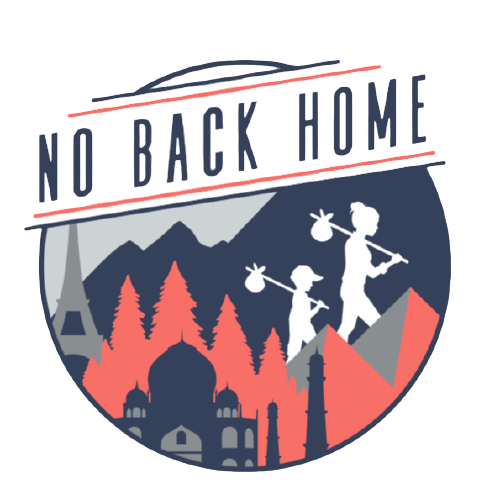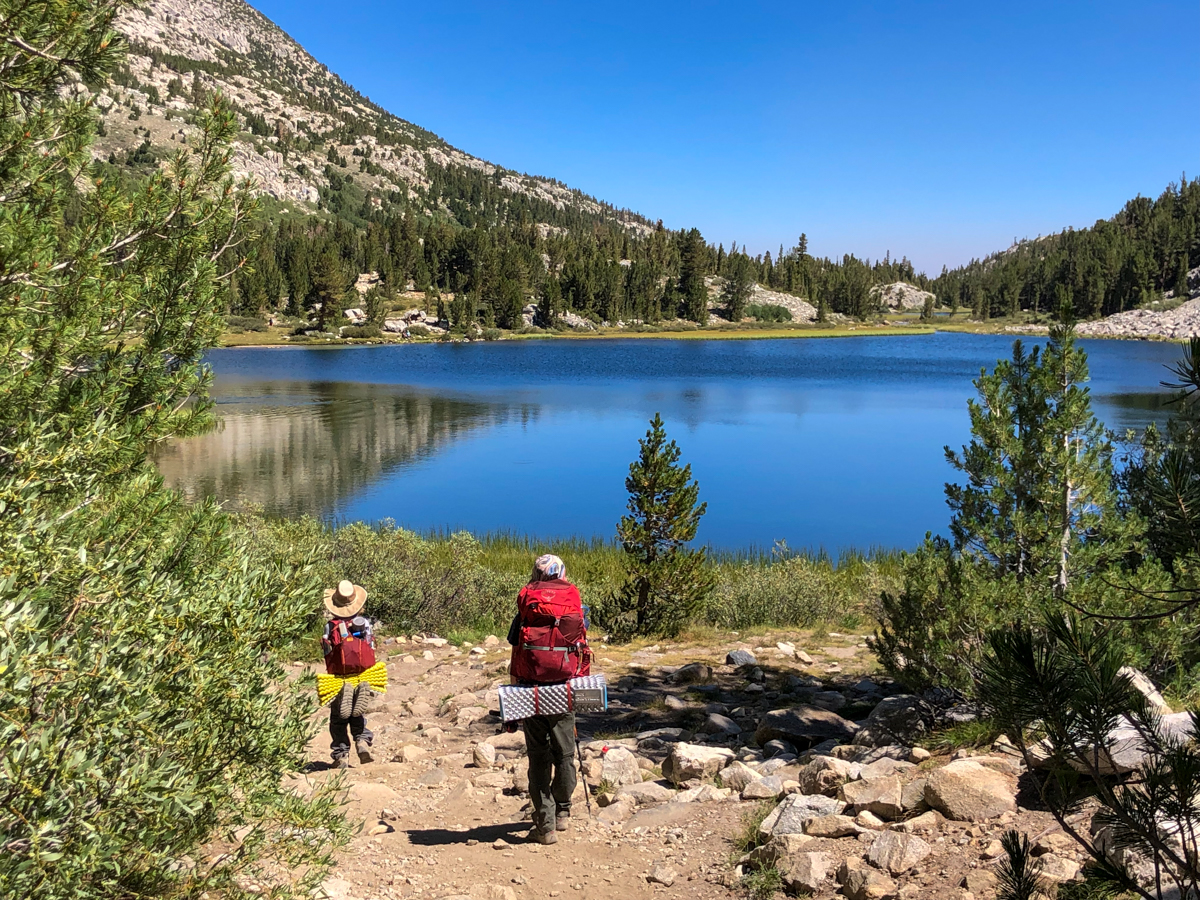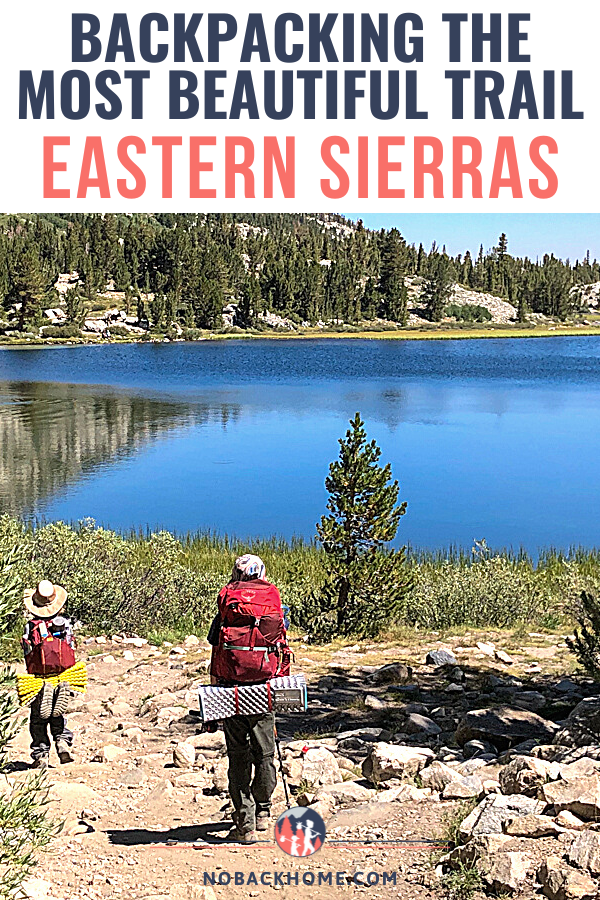Little Lakes Valley in the Eastern Sierras is one of the most beautiful hikes in the high sierra and one our favorite backpacking hikes in California with kids and for beginners. This beautiful hike follows along a creek, passes several pristine alpine lakes and offers gorgeous scenery without too much hard work. This is almost unheard of in the sierras, but it is true! Below I share all the details you need to day hike or backpack this beautiful trail.
Jump to a Heading Below
Where is Little Lakes Valley?
Little Lakes Valley is also often called Rock Creek. This trail is located in the Eastern Sierras just south of Bishop. A very popular trail, for good reason, Little Lakes Valley is a hit with any alpine lake lover.
Details on the Trail
- 8 miles round trip – out and back
- 1,000 feet of elevation
- Trailhead location: Mosquito Flat Trailhead at the end of Rock Creek Road
How do you get to Little Lakes Valley?
Mosquito Flat trailhead is where you begin your hike for Little Lakes Valley. This trailhead is located at the end of Rock Creek Canyon and is about 20 minutes from Highway 395 on good road. There is a small parking lot at the end of the road, but you will notice as you drive up there are several smaller lots with many cars parked along the road. This is because this hike is VERY popular. If you plan to get a parking spot on the weekend, it is best to arrive before 7 a.m. or later in the afternoon. We have had good luck finding spots at both times. But it does get tricky on the weekends and during the peak season of summer as this is a popular trail for people day hiking and fishing.
Note – there are bathrooms, trash cans, and bear lockers at the trailhead to store any food during your hike so you don’t attract any bears to your car. If you plan to stay overnight, make sure your car is clear of food as bears do frequent this area.
Getting Permits for Little Lakes Valley
 If you are planning to only day hike Little Lakes Valley, permits are not required. However, if you plan to stay overnight in the backcountry, you must secure a permit in advance of your trip. This trail is extremely popular, so permits can be a challenge. That said, it is well worth the effort as the hike is great for beginners and those with kids and camping overnight once the day trippers have left is magical.
If you are planning to only day hike Little Lakes Valley, permits are not required. However, if you plan to stay overnight in the backcountry, you must secure a permit in advance of your trip. This trail is extremely popular, so permits can be a challenge. That said, it is well worth the effort as the hike is great for beginners and those with kids and camping overnight once the day trippers have left is magical.
Permits for backpacking Little Lakes Valley can be tough to come by during the peak season. If you know you would like to backpack here with a group, we highly recommend getting your permits in advance. Permits are released on Recreation.gov 6 months in advance and typically sell out within seconds for popular weekends. To find your permits, look under Inyo National Forest Wilderness Permits. If you are flexible on your dates, you can typically find a permit during the week or at the beginning and end of the summer season.
Or if you are a last minute camper like me, you can try your luck 2 weeks prior to the date you want to camp as “walk up” permits are released then.
Where to Stay Near Little Lakes Valley
If you are looking to start off early at Little Lakes Valley for backpacking or just want to day hike this trail, there are several places around that are great to stay for easy access. We highly recommend staying nearby so that you can acclimate to the high altitude. For those with a backpacking permit, you are allowed to stay one night at the backpackers camp at the trailhead. For those arriving late at night, we recommend this option as it will ensure you get a parking spot and allows you the ability to start your hike early before the day trippers arrive.
Other options include staying in Bishop at a hotel or at one of the nearby campgrounds around Rock Creek Lake. There is also a small resort at Rock Creek Lake that is worth checking out if you plan well in advance.
We typically visit Little Lakes Valley on our way back from backpacking around the Mammoth Lakes area so we are well acclimatized.
Things to Know For Backpacking Little Lakes Valley
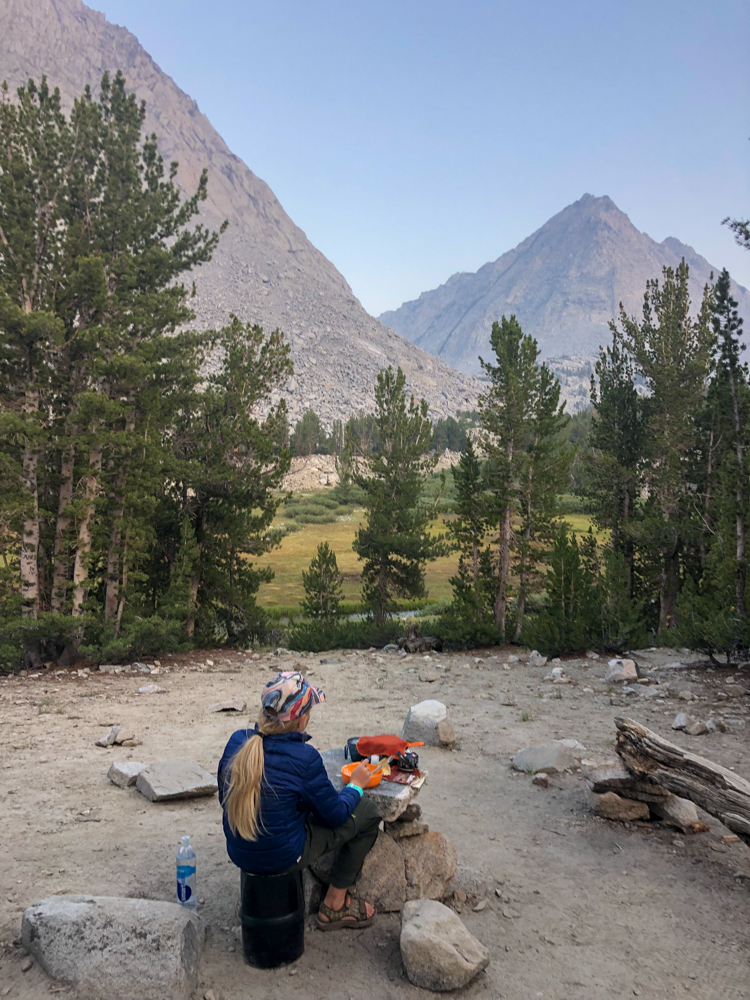
There are a few things to consider before heading to Rock Creek or Little Lakes Valley for either a day hike or backpacking trip.
When to Go
The best time to hike or backpack the Little Lakes Valley trail is from May to the end of September. Before and after these months, the weather can get very cold with snow possible due to the high elevation. At other times of the year, this road may be closed.
Proper Food Storage
For backpackers, it is required that everyone have bear canisters while staying overnight in the back country here. Bears are occasionally a nuisance at popular camping spots around the lakes and around the parking area. Remember to pack out everything that you take in with you whether you are here for a day or a weekend. This includes any spilled food, uneaten meals, wrappers and toilet paper waste. Please brush up on Leave No Trace principles before heading out.
Managing the Altitude
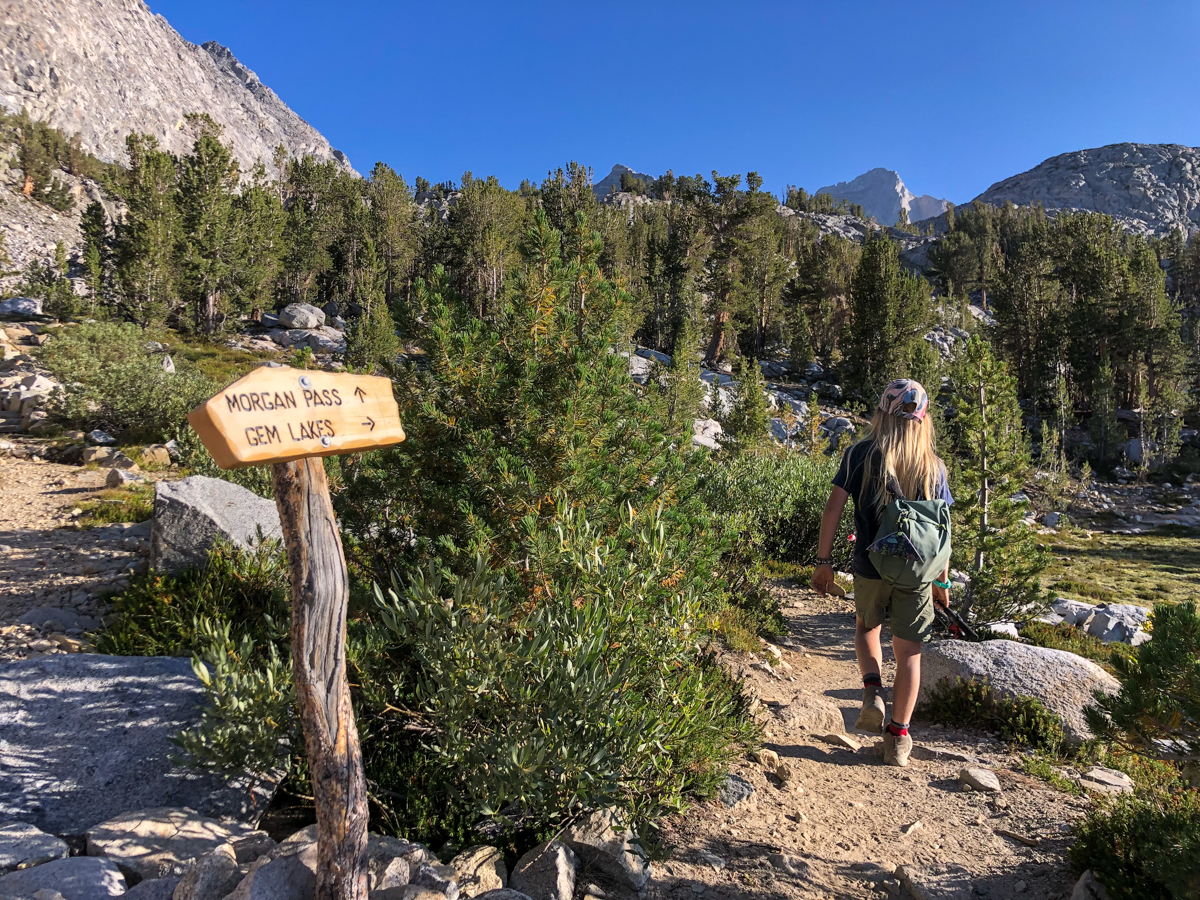 Mosquito Flats is at at 10,215 feet in altitude, making it the highest trailhead in the Eastern Sierras. As this is your starting altitude, you don’t have a ton more to gain as you hike the trail, however it is important to be aware of altitude sickness.
Mosquito Flats is at at 10,215 feet in altitude, making it the highest trailhead in the Eastern Sierras. As this is your starting altitude, you don’t have a ton more to gain as you hike the trail, however it is important to be aware of altitude sickness.
Altitude sickness does not affect everyone the same way. For many people the only effect may be breathlessness when walking and hiking, for others it’s a real issue that can be debilitating.
What exactly are the symptoms of altitude sickness?
The symptoms of altitude sickness can range from mild to severe headaches, nausea, shortness of breath, fatigue and difficulty sleeping.
For most people, symptoms of altitude sickness can begin within a few hours of getting to higher elevation. However, we have seen it take one to two days to show up or that the symptoms come and go.
How to Prepare & Feel Your Best
In our experience, the best thing to do to prepare to go into higher altitudes is to hydrate very well. We typically drink electrolyte drinks for the 24 hours prior to visiting higher elevations. If possible continue to drink at least one electrolyte drink per day while in high altitude as well to help keep any symptoms away. This is especially true in the summer months where it may not feel too hot, but is often very dry.
Additionally, avoid alcohol, drink a ton of water (3-4 liters a day), eat more carbs and go up in elevation slowly. If you experience symptoms that are not reducing with water, electrolytes or pain reliever medication, get down to lower elevations.
Do you have a headache? Do you have nausea or vomiting? Are you dizzy or feeling confused? Do you have loss of appetite? If you have several of these symptoms, it is best to get to lower elevation.
Little Lakes Valley Trip Report
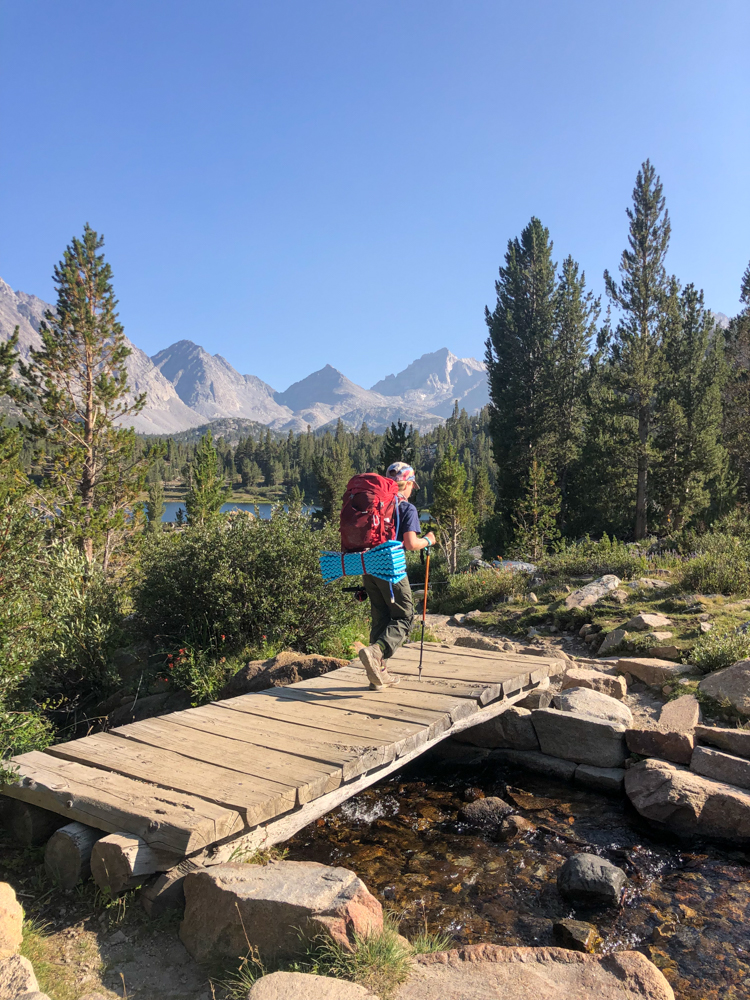 We have been to Little Lakes Valley on several backpacking trips and day trips. Overall for us, this is an easy trail with minimal elevation gain. However, those that are not used to the altitude might experience more difficulty. The biggest factor to consider is this trail is not shaded and can get VERY hot during the summer. We highly recommend hiking in the early morning hours or late afternoon hours when the weather is much more manageable.
We have been to Little Lakes Valley on several backpacking trips and day trips. Overall for us, this is an easy trail with minimal elevation gain. However, those that are not used to the altitude might experience more difficulty. The biggest factor to consider is this trail is not shaded and can get VERY hot during the summer. We highly recommend hiking in the early morning hours or late afternoon hours when the weather is much more manageable.
The Hike
The Little Valley Lakes trail begins just at the end of the parking lot after the restrooms. The first part of the trail is slightly uphill climb. After about 0.6 miles just before Mack Lake, you will pass the junction for Ruby Lake and Mono Pass Trail on the right.
Right away though you are treated to spectacular views of mountains in the distance and lots of colorful wildflowers on the side of the trail. Walking along you will cross Rock Creek several times and pass by all the beautiful alpine lakes.
From here, the beautiful lakes continue to impress. Next up is the little Marsh Lake that can either be more marsh like or more lake like depending on the time of year! Another .7 miles up and you approach your third lake, Heart Lake. In person I don’t quite see the heart shape, but perhaps on the map it shows it off more.
The trail continues on western shore of Marsh Lake before climbing again to Box Lake with a beautiful overlook. From the southern end of Box Lake, it is only about.3 miles before the next and largest lake here, Long Lake. As you approach Long Lake, you will continue walking on a small trail hugging the left of the lake. You might see painters here or folks fishing or maybe families frolicing in the shallow water. This is a popular spot to stop if you are hot and tired.
Tip: Don’t forget to take a photo with the John Muir Wilderness Sign!
Where to Camp
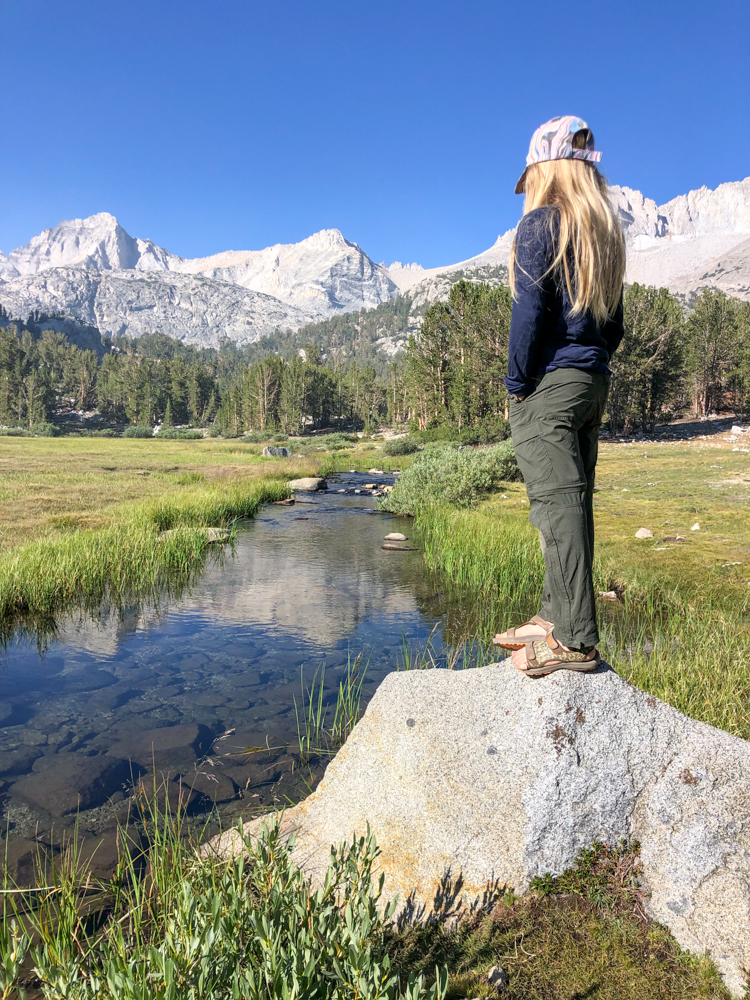
For those backpacking, I would not stay at any of the lakes before Long Lake. On one of our trips we stayed at the far side of Long Lake which was far enough from the trail that you felt secluded, but not too far away that it was still easy for beginners and children to hike in.
However, our preference is to camp at Chickenfoot Lake, which is just another.7 mile from the end of Long Lake. This lake is a quick detour off the main trail, just far enough off trail to be isolated from the throngs of day trippers, but not too far off trail to check out if you are continuing on further. Getting to this lake will feel harder than it actually is as it gains around 250 feet in that short stretch.
Chickenfoot Lake is at 10,761 feet and is a large, crystal clear lake with a mile of mostly rocky shoreline. Though this is just three-and-a-half miles in on a nearly flat trail, it is easy enough to find private spots to camp.
While we have not camped any further than this, we have day hiked all the way to Gem Lakes. As you venture deeper in to the mountains, you will see views of Mt. Dade, Mount Mills and Mound Abbot looming in the distance.
If you would like to camp even further, there are a number of beautiful sites around both Upper and Lower Gem Lakes. We are typically tired by the time we reach Chickenfoot Lake that we stop there and opt to day hike further on.
Conclusion
Even though this is a popular hike, it is one of our favorites to take friends on for their first backpacking or hiking adventure. Summer weekends see this easy hike full of families, fisherman and day hikers for good reason. The beauty of the Little Lakes Valley lies in the beautiful alpine lakes, easy trail and accessibility. If you make it out, let us know what you think!
If You Enjoyed This Post, Sign Up To Receive Posts By Email or…
